Apple has (finally) updated its Mac Mini line to support the M2 line of processors. What is more, there is now an expanded set of processor, GPU, and memory options compared to the M1 Mac Mini, and the 10Gbase-T option is available at launch. Apple also announced the new M2 Pro in its Macbook Pro line with an M2 Max option as well.
Apple Mac Mini M2 and M2 Pro Launch with Optional 10Gbase-T
Here is the quick side-by-side of the Apple M2 and M2 Pro available in the new Mac Mini.
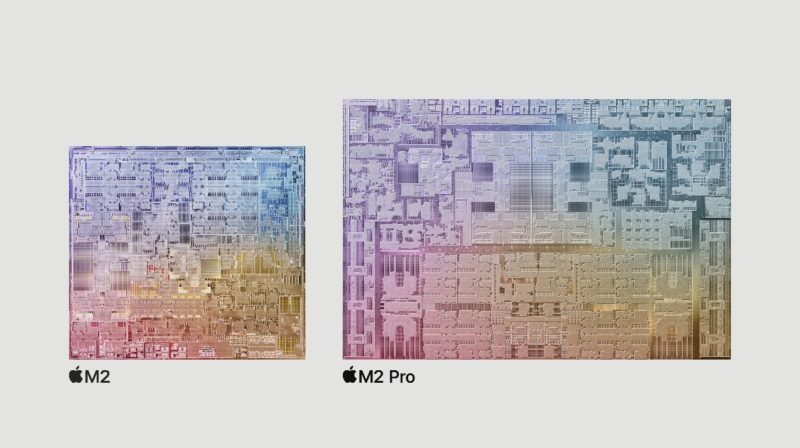
The Apple M2 supports up to 24GB of unified memory and is the company’s low-end option. A basic Apple M2 configuration starts at $599 with 8GB of memory and a 256GB SSD.
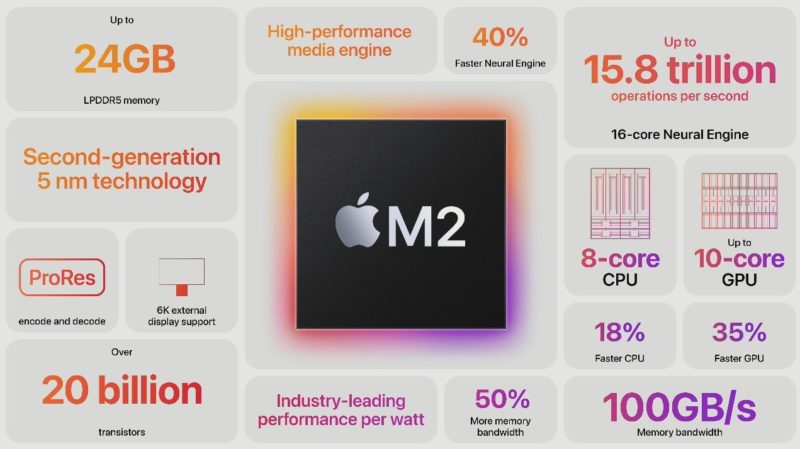
The Apple M2 Pro is really interesting. Apple highlights its improvement, but the CPU is only 20% faster. That is not a huge claim for a generational CPU upgrade as we have seen larger CPU-based gains from Intel and AMD recently. The integrated GPU is claimed to be up to 30% faster. There are options for up to 32GB of LPDDR5 memory as well as improved neural engine and media engine performance. It is telling that Apple’s biggest gains are on accelerators, not its CPU cores. For those that saw our recent 4th Gen Intel Xeon Scalable Sapphire Rapids coverage and our special mention of built-in AI acceleration on the AMD CES 2023 keynote, this is a big industry trend.
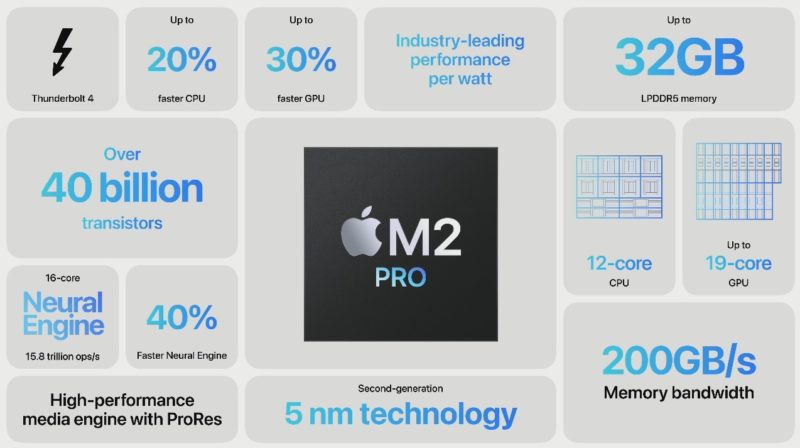
Here is the new Apple M2 Pro chip with 32GB of unified memory.
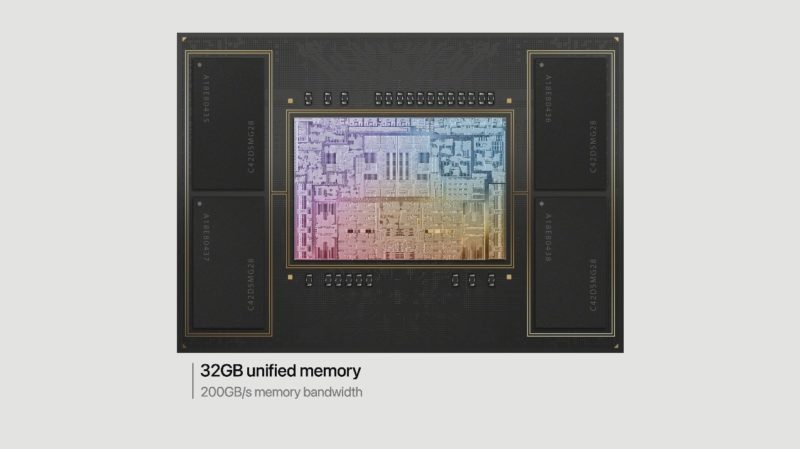
Here is the diagram with the updated high-performance M2 cores:
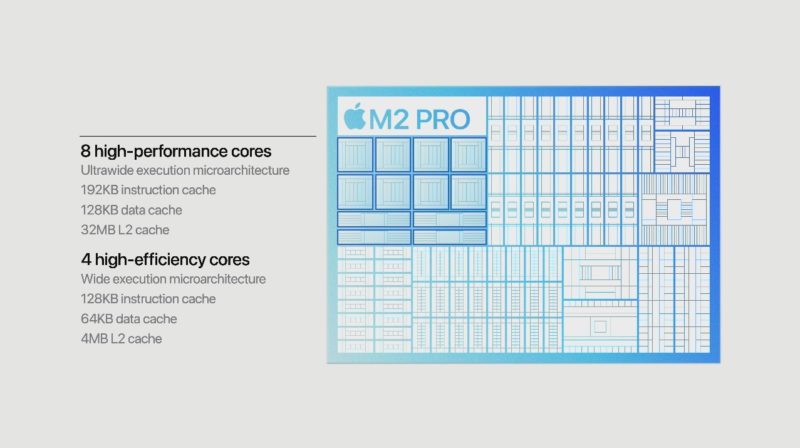
The GPU is up to 19 cores:
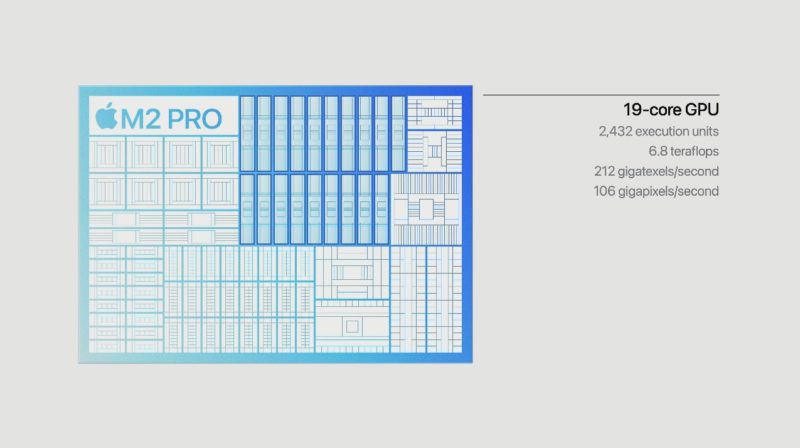
Apple claims its neural engine, which takes up a lot of die area if you compare this diagram to the die shot above, is up to 40% faster. Apple is going all-in on AI inference acceleration.
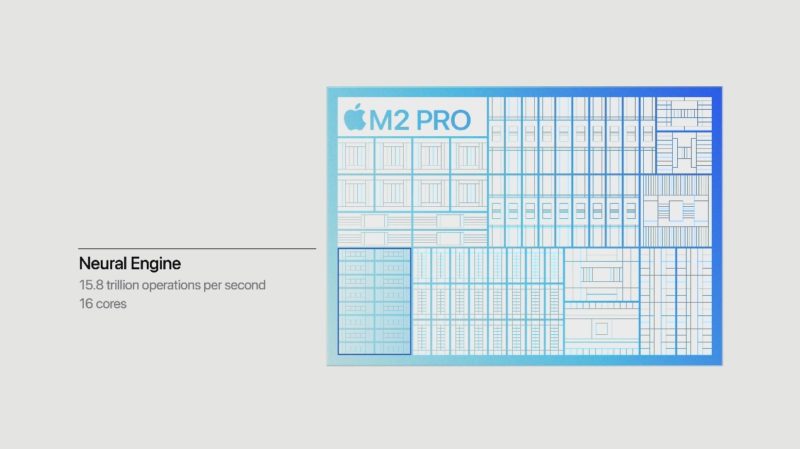
We also get the updated media engine.
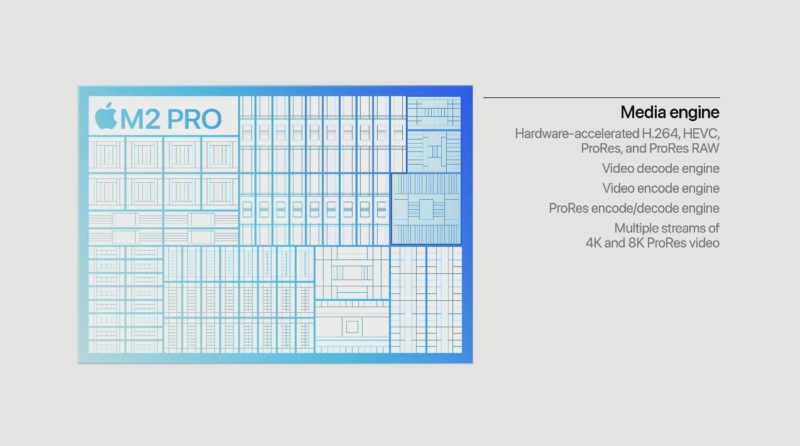
The Apple M2 Pro Mac Mini starts at $1299 and goes up to $4499 based on options. Storage on the Mac Mini’s has a fairly obscene cost scaling at >3x what M.2 SSDs would cost. One very reasonable option is the 10GbE option. This pushes ship dates back from 1/24 to mid-February, but at least it is an option at a very reasonable price. It is also available at launch, which is something the Apple Mac Mini M1 got after launch.
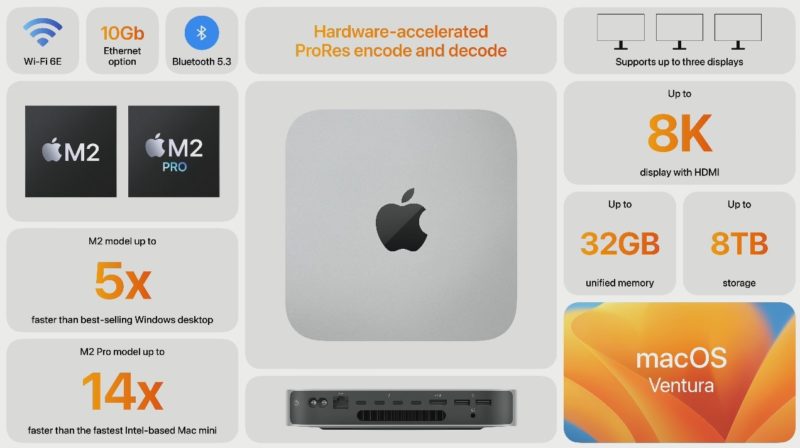
Apple also added the M2 Pro and the new M2 Max CPUs to its Macbook Pro line.
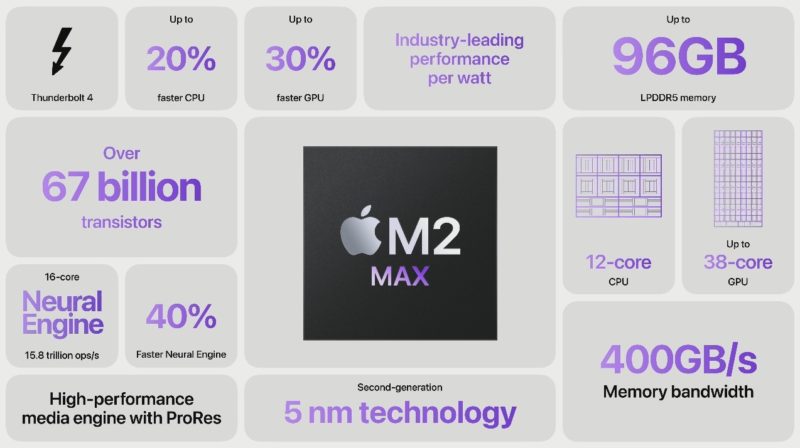
We are not going to cover the laptops here, but there is a new bigger chip with more memory capacity.
Final Words
For folks that do not know this, I switched to the M1 Macbook Pro then to the 14″ M1 Max Macbook Pro with 64GB of memory. That machine has been awesome, as has the 10Gbase-T Mac Mini. Something I will say is that based on the M2’s specs, I probably would not upgrade a M1 to M2 Mac Mini. I might upgrade a M1 to a M2 Pro Mac Mini with 10Gbase-T. the 10Gbase-T option allows one to use a NAS for storage at reasonable performance and get around the scary cost of Apple’s SSD storage.
On the Macbook Pro 14″ M2 Max, something interesting happened. Although I usually use the fastest systems around, at ~$4.5K to upgrade my existing notebook, I paused at the order button and thought it is not worth it. The M1 Max’s built-in acceleration already allows me to edit and render YouTube videos on planes and battery from our 4K and 8K source footage. That acceleration was a step function versus other 14″ notebooks. The M2 Max performance gains do not feel like a required upgrade. That is perhaps the challenge of performance gains through acceleration. Once a performance target is met for an application, is there more even needed? That is similar to when we talk about high-end acceleration like QAT in modern servers. If one needs 100Gbps IPSec, one does not need 800Gbps on the chip. It is fun that Intel has QAT acceleration on the Sapphire Rapids parts that are around the same throughput as the entire CPU and GPU memory bandwidth of the Apple M2 part.
Still, the Apple Mac Minis are available in a wider range of memory capacities close to shipping and were orderable after the announcement. Our Mac Studio M1 Ultra 128GB order was canceled because it took too long to ship (2+ months.) For the industry, the leap to acceleration for tasks is a step function in performance, but the next question is how to keep pushing the frontiers of acceleration in meaningful ways.
We now have both the Mac Mini M2 and Mac Mini M2 Pro 10GbE versions on order.

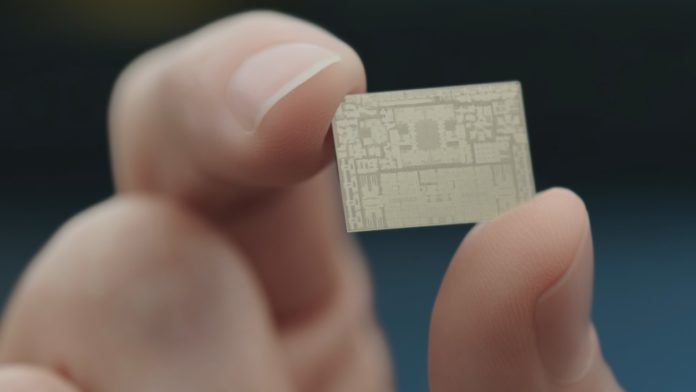



Looks like it’s $100 extra to upgrade from Gigabit.
base model is still only 8gb/256gb, add minimal upgrade and its $999 :(
I just wish there was an sfp option…
Interesting, so you say basically the M2 Pro is fast enough for almost everyone (as it is roughly as fast as the M1 MAX).
One thing though: i wish you’d included a die-shot analysis like this: https://cdn.wccftech.com/wp-content/uploads/2023/01/M2-Pro-die-shot-analysis.jpg.webp
Looking at all the graphics & the die shot, i do wonder if now would be the right time to start diversifying the SoC’s. This chip is awesome for content creation & graphics stuff. However it is severely underpowered when it comes to raw cpu perf. Especially considering that each gpu-core is as big as a gpu core. I’d instantly prefer a M2 pro with 20/24-core cpu (16/20 hi+4lo) and ~9/4 gpu-cores. Maybe we could squeeze even cpu cores in by removing all but one external tb4/display engine, i mean my 65″ 8K desktop is seriously enough screen…
I mean for what me and my coworkers in engineering, the cpu is still king! But we could do with a way smaller gpu that is just fast enough for shaded solidworks/blender. like, half a Radeon 610M. Yes, we use Threadripper Workstations & Server-Farms, but it would surely be nice to also be included in the 21st century mobile working style.
I’m just wondering what vendor/model of the 10GbE ethernet is on the Mac Mini M2 Pro? Seems like there’s some trouble? Hoping it’s not the Intel i226-v.
To answer myself, Mac Studio and the Mac Mini M1 uses Aquantia (Now Marvell) 0x1d6a/0x04c0 which is the Marvell AQC113, so I guess it’s reasonable to believe that the Mac Mini M2 and M2 Pro uses the same chip.